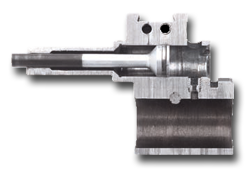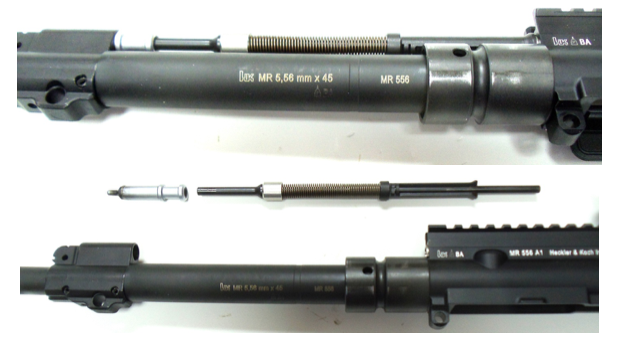FN SCAR has a little more travel than .25". While venting starts almost immediately, the pressure in the piston remains high enough to keep a descent amount of force for extraction. One of the reasons for the large piston area, force = pressure X area.

The same is true with the Steyr AUG, while it only travels a short distance before venting it takes a few milliseconds to drop the pressure to ambient. For example, the AR carrier cavity is about 2,400 psi just before uncovering the vents, but after 1.25 milliseconds the pressure is still 350 psi and producing a force of about 100 pounds, an the AR has two 1/10 inch diameter holes, about three times the vent area of either the FN or the Steyr.

H&K's piston looks to be short, but it isn't. Again, while the piston begins venting as soon as the little nipple pops out of its bore, the vent orifice is only 1.5mm so it take a while for the pressure to completely drop down to where it's not doing anything.

The M1 Carbine does not vent externally, and has a piston stroke of 3/16 inch. The Carbine is similar to the AR, in that it extracts on momentum alone, but it does have some camming action by the locking lugs to increase the power for initial loosening.
This is the pressure-time curve for an AR-18. It can be taken as typical for a 5.56mm rifle with a 0.078" diameter gas port 12 inches from the base of the cartridge. Assume we have a piston the is 5/16 inch in diameter, that gives us a piston area of .0767 square inch, and venting, proper starts at that little bubble at 725 psi (0.5 X 10^7 Pa). The residual force on the piston at venting is 55 pounds, so there is enough force to be helpful.





 Reply With Quote
Reply With Quote







Bookmarks